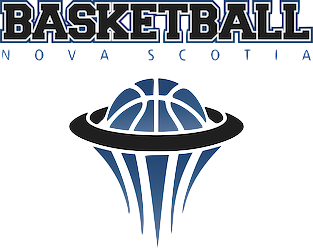Defence Rules
The purpose of this document is to help coaches, officials, parents and administrators understand the LTAD (Long Term Athletic Development) modifications that have been in effect since 2008 by CB. The LTAD modifications were brought to the table by BNS through Canada Basketball’s direction and were made in the best interest of putting more emphasis on basic fundamental skill development at the Under 10, Under 12 and Under 14 age groups. To read the LTAD and understand the philosiphy go to the link.
LTAD (Long Term Athletic Development)
Also, please take a minute to review our videos for clerification.
Before viewing these diagrams below, you should first understand the 1/3, 2/3 rule:
1/3 refers to you as a defensive player guarding your offensive player who is 1 pass away from the ball position (cetain situations, also referred to strong side).
2/3 refers to being 2 passes away from the ball position (certain situations this is also refered to as weak side).
Please note that it is the responsibility of the coach to know and respect the modifications.
Under 14 / Under 12 / Under 10 - No double / triple teaming AND No Zone, half-court or full-court presses (Man-to Man full court press is permitted in D1 and D1A of Under 12 and all divisions within Under 14)
- No Zone (including half-court, and full-court presses) - Zone defenses limit defensive and offensive skill development at the younger ages. Coaches should focus their time on teaching basic fundamental skills at practices versus “strategies” such as applying and breaking zone presses. “Help” defense concepts should be taught and applied along with individual man-to-man defense. The No Zone modification encourages movement, allows for creativity with the ball, passing, cutting and penetration, and more time can be spent in practice on the mastery of basic fundamental principles of play for both offence and defense.
- No Double / Triple Teaming - Double teaming a player with or without the ball is not permitted unless that player has a clear offensive advantage versus their defender (i.e. a player leaving their own check to help against an offensive player that has beaten their defender would be acceptable.). A double team is interpreted as two (or more) players actively guarding an offensive player that has not created an offensive advantage against his or her defender. The No Double Teaming modification encourages movement and spacing, eliminates complex defensive rotations, and more time can be spent on the mastery of basic fundamental principles of play and provide a foundation of offensive and defensive skills.
Spirit of the modifications
It is expected that everyone involved will understand the reasoning behind the modifications. Players at these levels are still at the “Learn to Train” stage and phase 1 of the “Train to Train” stage within the LTAD model. The focus is on learning and training to become a multi-skilled, multi-positional player. Using concepts such as zone defense and double teaming limits the training time that coaches can put into individual player development, since so much time must be spent in team practices developing the strategies and tactics involving these defenses. Also, zones and double teams often put players into defined positions which can limit the development of the multi-skilled and multi-positional player/athlete.
The purpose of this document is not to provide coaches with a means to find loopholes in the modificationsand thereby develop elaborate strategies that play on the edges of the rules. Coaches are to use this document to clear up any misunderstanding of what will or will not be permitted. Any questions should be directed to BNS or MBA and answered before arriving at the an MBA League game/event.
Interpretation
BNS / MBA does not want a rule that limits the teaching of sound player to player defensive principles. We also do not want a rule that allows for the offensive coach to create exotic formations that hinder sound defense, and give an unfair advantage to the offence. Zone defensive rules that stress no defensive player in the key encourage these situations. With this in mind we will use this document as a guide for players, coaches and officials.
Each player on the defensive team must guard a player on the opposing team. They should be in proximity to that player and should make defensive moves associated with the movement of the offensive player.However, the spirit of this rule also means that the offensive player must be attempting to move to a scoring position.
A defensive player does not need to closely guard a player who has moved outside of the key area and beyond the three-point line or the approximate area when a three-point line would be marked on the floor. (i.e. as an extreme example, sending offensive players to stand near the centre line or side lines to pull all the defense out of the key and allow only select players to be involved in the play is not in the spirit of the rule.)
Also no double-teaming a player with or without the ball unless they have created a clear offensive advantage versus their defender.
Sources of confusion (Provided by Mike Lumsden)
Source #1 - Sound man-to-man defensive coverage does not mean that a defender needs to stick to her player "like glue". Particularly when a player's check is on the weak side of the floor, sound defensive positioning involves “sagging” into help position at or near the edge to middle of the key (The Wall or imaginary line that splits the court down the middle). This "sag" may be misinterpreted as a zone defense, which is not the case.
Source #2 - Situations that require a defender to "recover". Another fundamental of man-to-man defense involves what to do when a teammate gets beaten, for example by pass/dribble penetration or gets hung up on a screen. The defender beaten or hung up may try and recover to their check. If a teammate has also "helped" or "switched" on the screen, then the recovery leads to a short-lived and accidental "double-team". These two situations are not a violation of any rule. Coaches must teach their players to communicate in these situations.
(For example, a player gets beat by the dribble, another player steps in to help by leaving their man, the original defender tries to recover but the dribbler now moves further away by dribbling towards the corner the original defended communicates to his team mate “stay” I got your man, or often they will be taught to say “switch” which either player will shout. Often you will also hear “switch” when a pick takes place.)
Source #3 - These are young players and they will forget. At these levels, the ball is often a magnet. Although they are taught not to play this way, they sometimes forget and need reminders. A player watching/following the ball on defense and losing complete sight of her check is not a malicious attempt to play a zone defense. Young players may also forget to recover if they have helped or switched…this is not a malicious attempt at a double team. They simply need reminders and coaches should expect this - this is why we have coaches.
Coaches and parents as well as the referee need to be cognizant of this and recognize it. Versus shouting out “…they’re double teaming”).
Who is Responsible?
It is not the role of the offensive coach, players and/or team followers to judge if the opponent is playing a zone or if a double team is occurring. Repeated displays by such individuals or groups will not be tolerated. While the officials will be responsible for making these calls, it is the responsibility of the coach to know and respect the modifications. The officials will recognize that there must be intent on the player or team to violate the rules and they are aware that players may occasionally be caught in a position that may appear to be in a zone or double team. It is not the intent of the modifications to penalize players for their brief loss of concentration.
It is expected that all teams at these levels will abide by the modifications. If the intent to play a zone defense or double team is detected, this is the procedure that will be followed in this years play-offs as it was all year:
(1) On the first offence, play shall be stopped and a warning shall be issued to the coach utilizing the illegal defence. Play shall resume with the ball being awarded to the offensive team.
(2) On the second and any subsequent offence, the offensive team shall be awarded one free throw and possession at the point of interruption.
Summary
Please remember that because these are rule modifications and because these are young players, it is sometimes a subjective decision as to whether or not a true double team has occurred or a half-court zone trap is happening. Ultimately, coaches need to be aware of all the above situations and remind their players that when they help…to recover. If a switch in checks takes place, both defenders involved need to switch…not just one. If they are in help position and their check receives the ball, close out and guard the ball, etc. Coaches also need to be aware of these situations when their opponent is on defence, recognize that all players at these levels are kids who need help/reminders, and not immediately conclude a rule violation.



